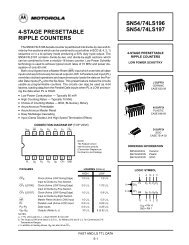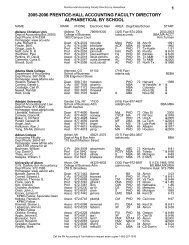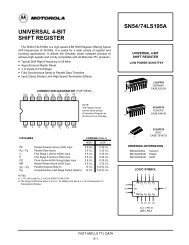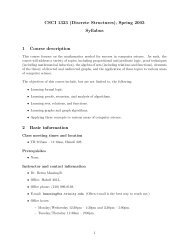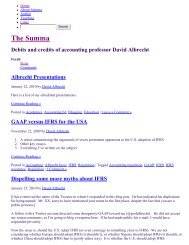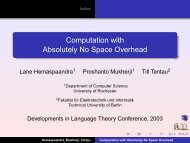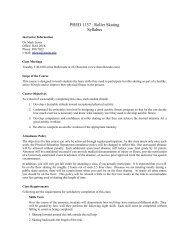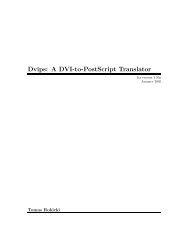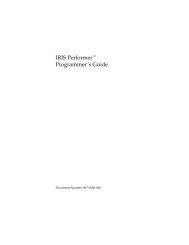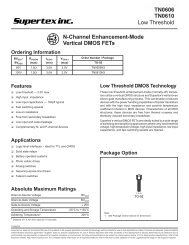A formal description of SYSTEM/360
A formal description of SYSTEM/360
A formal description of SYSTEM/360
- No tags were found...
Create successful ePaper yourself
Turn your PDF publications into a flip-book with our unique Google optimized e-Paper software.
for assistance in the early stages; to IBM <strong>SYSTEM</strong>/~~O architectsG. A. Blaauw and A. Padegs for the patient exposition and checking<strong>of</strong> countless points; to J. C. McPherson, Director <strong>of</strong> the IBMSystems Research Institute for an opportunity to present thematerial in a course; and to members <strong>of</strong> the Institute class forhelpful comments and corrections.CITED REFERENCES AND FOOTNOTES1. IBM <strong>SYSTEM</strong>/<strong>360</strong> Principles <strong>of</strong> Operation, Form A22-6821-0, IBM GORP.,1964.2. The present <strong>description</strong> is carefully checked against the specifications <strong>of</strong>IBM <strong>SYSTEM</strong>/~~O available in August, 1964. It is, however, not <strong>of</strong>ficial;because <strong>of</strong> normal revisions <strong>of</strong> the system and possible errors in thepresent paper, the machine manuals issued by IBM will, as usual, be thefinal arbiters <strong>of</strong> system specifications.3. The programs and tables have been reprinted on large display sheets t<strong>of</strong>acilitate study. Copies may be obtained on request to the ZBM SystemsJournal.4. K. E. Iverson, A Programming Language, John Wiley and Sons, 1962.5. A. D. Falk<strong>of</strong>f, “Algorithms for Parallel-Search Memories”, Journal <strong>of</strong>the ACM 9, No. 4, 488, (October, 1962).6. K. E. Iverson, “Programming notation for systems design”, ZBM SystemsJournal 2, 117, (June, 1963).7. To provide complete freedom in the attachment <strong>of</strong> devices in <strong>SYSTEM</strong>/~~O,the hardware for the interface has been standardized with respect to bothelectrical characteristics and logical behavior. The correspondence betweenthis hardware and the representation used here is as follows. The hardwarehas a separate bus and separate tags for each direction <strong>of</strong> data flow,and therefore has no need for V;. There is an exact correspondencebetween physical control lines and each <strong>of</strong> e, $, 6, and PC. The hardwarehas, in addition, two lines not represented by iF or PC. A line called“hold-out” is not needed here because its function has been incorporatedin the treatment <strong>of</strong> PC, which differs in detail from the hardware selectout;and a line called “request-in” appears in lines 37 and 38 <strong>of</strong> CH onlyas a logical function <strong>of</strong> the variables Vs and VI2 which are set by thecontrol units.8. The hardware analog <strong>of</strong> this formulation is derived by identifying witheach channel number available to a control unit a wire from it to theappropriate channel. Within each channel all such wires are ored together.Putting a number in Vy2 and setting V: then corresponds to selecting anoutgoing wire in the control unit and signalling on it.9. “If [a] device is currently communicating over the I/O interface, thedevice immediately disconnects from the channel. Data transfer and anyoperation using the facilities <strong>of</strong> the control unit are immediately terminated,and the 1/0 device is not necessarily positioned at the beginning<strong>of</strong> a block. Mechanical motion not involving the use <strong>of</strong> the control unit,such as rewinding magnetic tape or positioning a disk access mechanism,proceeds to the normal stopping point, if possible. The device remainsunavailable until the termination <strong>of</strong> mechanical motion or the inherentcycle <strong>of</strong> operation, if any, whereupon it becomes available. Status informationin the device and control unit is reset, and no interruption conditionis generated upon completing the operation.” (Ref. I, p. 90).10. Like machine checks in other parts <strong>of</strong> the system, which depend uponsensing the parity in various machine registers and date paths, thegeneration <strong>of</strong> Sg is not shown in this <strong>description</strong>.1 11. This reset signal is detected only by a device that is connected to thechannel at the time, and will cause this device and its control unit toreact exactly as for a system reset (see note 9), except that an interruptioncondition m y be generated when a mechanical operation is completed.FORMAL DESCRIPTION OF <strong>SYSTEM</strong>/<strong>360</strong> 239




